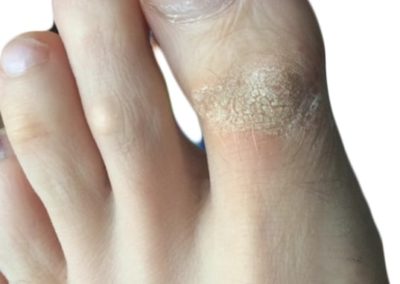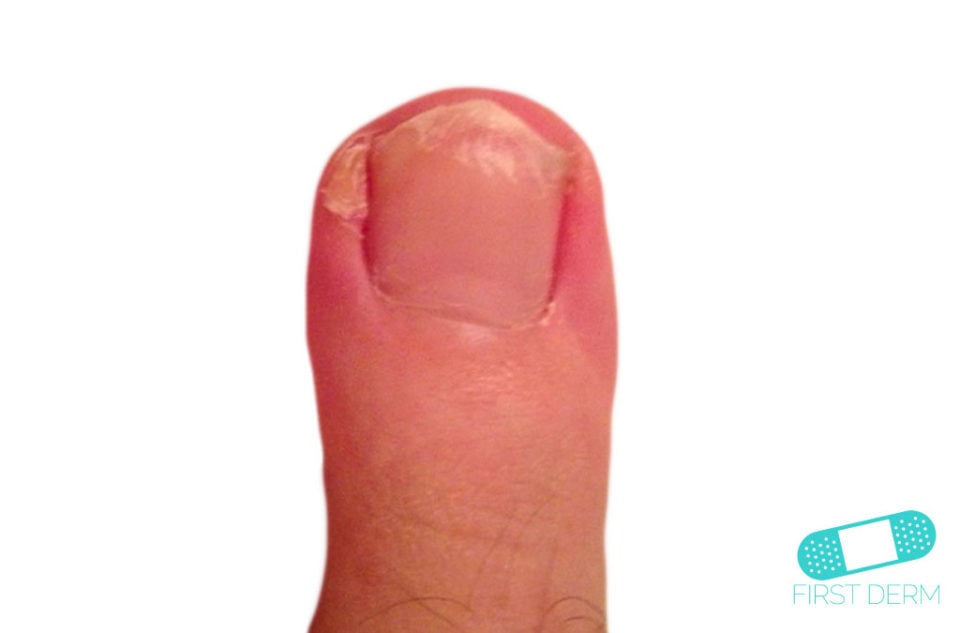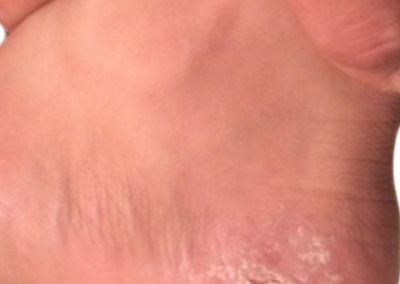Hyperkeratosis
Medically reviewed by The Dermatologists and written by Dr. Alexander Börve
More than 3 million US cases per year
- Requires medical diagnosis
- Symptoms: Skin thickening in the form of corns and calluses, chronic eczema, lichen ruber planus, warts, seborrheic keratoses, epidermolytic hyperkeratosis or follicular hyperkeratosis
- Color: Typically flesh-colored
- Location: Anywhere on the skin
- Treatment: Corticosteroid creams, laser therapy or surgery
Hyperkeratosis is the thickening of skin due to irritation from the sun, chemicals or frequent friction or pressure. The skin thickening occurs in the outer layer of the skin, which contains a tough, protective protein called keratin.
It is often part of the skin’s normal protection against rubbing, pressure and other forms of local irritation. Sometimes, hyperkeratosis occurs on skin that has not been irritated. This is a genetically inherited and lifelong condition.
Try our FREE dermatology search engine and get peace of mind within a second
Symptoms
Hyperkeratosis presents itself in various forms. Here are some examples.
Corns and calluses
Corns and calluses appear when thick layers of dead skin cells pile up and harden. They develop in areas of skin exposed to repeated friction or pressure. This often happens on toes, the soles of the feet and the palms of the hands. They can cause pain for some people.
Chronic eczema
Eczema causes itching, redness and tiny blisters. When the inflammation is difficult to control, chronic eczema can also lead to:
- Dry skin
- Scaling
- Changes in skin color
- Localized hair loss
Read more here.
Lichen ruber planus
This condition may appear as a lacy white patch on the inside of the mouth. Or it may be an itchy, violet, scaly patch elsewhere on the skin. Read more here.
Warts
Warts are small bumps on the skin that are caused by human papilloma virus (HPV) infection. Read more here.
Seborrheic keratoses
These are small, noncancerous skin growths, and can be tan, brown or black. Read more here.
Actinic keratoses
These are flat, red, rough, sandpaper-like spots or patches of skin, caused by excessive exposure to the sun. Read more here.
Epidermolytic hyperkeratosis
This is a dominant form of ichthyosis that occurs since birth. It is characterized by redness and severe hyperkeratosis with small, hard wart-like scales over the entire body.
Follicular hyperkeratosis
This a skin condition characterized by excessive development of keratin in hair follicles, resulting in rough, cone-shaped, elevated pimple-like growth. It is related to deficiencies of vitamins A and E, B complex vitamins, and essential fatty acids.
Try our FREE dermatology search engine and get peace of mind within a second
What can I do?
Hyperkeratosis can usually be prevented by limiting sun exposure, wearing comfortable shoes, and avoiding irritants like harsh soaps and detergents.
Should I seek medical care?
Most forms of hyperkeratosis are harmless, but if you suspect that there is cancerous growth, you should seek help from a healthcare provider. You should also seek medical care if you have painful thickening that looks like a wart. People with diabetes should have their feet examined regularly by a health professional to avoid skin infections from corns, calluses or warts.
Treatment
Certain hyperkeratosis inflammations can be reduced with corticosteroid creams, but others require laser therapy or surgery. For example, warts can be removed by cryosurgery, laser therapy or excision.
Try our FREE dermatology search engine and get peace of mind within a second
Source:
Harvard Health Publications. Hyperkeratosis. Drugs.com. Available at: https://www.drugs.com/health-guide/hyperkeratosis.html
Medical Dictionary. Hyperkeratosis. Available at: http://medical-dictionary.thefreedictionary.com/hyperkeratosis
Ask a Dermatologist
Anonymous, fast and secure!

The Specialist doctor from the University Hospital in Gothenburg, alumnus UC Berkeley. My doctoral dissertation is about Digital Health and I have published 5 scientific articles in teledermatology and artificial intelligence and others.




